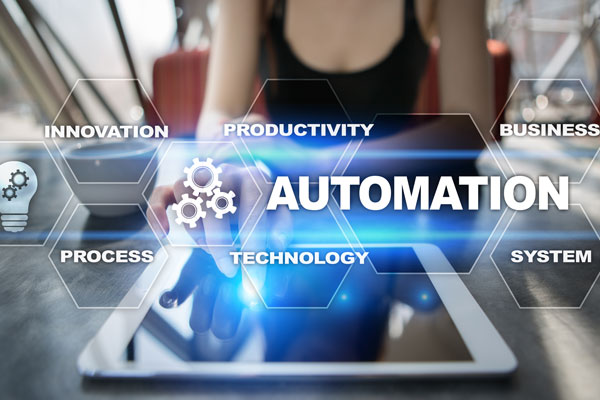The Evolution of Workplace Collaboration: Blending Digital Tools with Human Interaction
The Evolution of Workplace Collaboration: Blending Digital Tools with Human Interaction
Introduction:
In the rapidly evolving landscape of modern work, the fusion of digital collaboration tools with traditional human interaction is redefining professional operations. This transformation, accelerated by recent global events, has ushered in a new era of workplace dynamics. As organizations worldwide adapt to hybrid models, the interplay between technology and interpersonal connections becomes increasingly crucial. This blog explores how this blend is shaping the future of work, enhancing productivity, and fostering innovation while maintaining the human element that drives successful collaboration.
- The Rise of Hybrid Work Models
The concept of work has undergone a significant shift, with hybrid models emerging as the new norm. This approach combines the flexibility of remote work with the collaborative benefits of in-office presence.
- Balancing Remote and In-Office Work: Organizations are developing strategies to optimize both remote and in-office time. This includes designating specific days for in-person meetings and collaborative projects, while allowing for focused individual work from home.
- Adapting Organizational Structures: Companies are reimagining their hierarchies and team structures to accommodate dispersed workforces. This involves creating new roles focused on remote work coordination and revising policies to ensure equity between remote and in-office employees.
- Challenges and Benefits: While hybrid models offer increased flexibility and potential cost savings, they also present challenges in maintaining consistent company culture and ensuring equal opportunities for all employees, regardless of their work location.
- Advanced Digital Collaboration Platforms
The backbone of modern workplace collaboration lies in sophisticated digital tools that bridge the gap between physical and virtual workspaces.
- AI-Powered Project Management Tools: Artificial Intelligence is revolutionizing project management by automating routine tasks, predicting potential bottlenecks, and offering data-driven insights for better decision-making.
- Virtual Reality Meeting Spaces: VR technology is creating immersive meeting environments that replicate the feel of in-person interactions, allowing for more engaging and productive virtual collaborations.
- Asynchronous Communication Platforms: Tools that facilitate time-independent communication are gaining prominence, allowing global teams to collaborate effectively across different time zones without the pressure of immediate responses.
- Preserving Human Connection in Digital Spaces
As digital collaboration becomes more prevalent, maintaining human connections becomes both more challenging and more critical.
- Strategies for Building Team Cohesion: Regular virtual check-ins, mentorship programs, and digital 'open door' policies help maintain team bonds and support networks in remote settings.
- Virtual Team-Building Activities: Online games, virtual coffee breaks, and remote team challenges are being used to foster camaraderie and informal interactions among team members.
- Importance of Informal Digital Interactions: Creating digital spaces for casual conversation, like virtual water coolers, helps replicate the spontaneous exchanges that naturally occur in physical offices.
- Data Security in Collaborative Environments
With increased digital collaboration comes a greater need for robust security measures to protect sensitive information.
- Ensuring Privacy in Shared Digital Workspaces: Implementing end-to-end encryption, secure access controls, and data classification systems to safeguard information shared across digital platforms.
- Implementing Robust Cybersecurity Measures: Adopting multi-factor authentication, regular security audits, and advanced threat detection systems to protect against evolving cyber threats.
- Training Employees on Digital Security: Developing comprehensive security awareness programs to educate employees about potential risks and best practices in digital collaboration.
- Enhancing Productivity Through Technology
Digital tools are not just about facilitating communication; they're increasingly focused on boosting individual and team productivity.
- Time Management and Focus Tools: Apps that track productivity, block distractions, and optimize work schedules are becoming essential for remote workers managing their time independently.
- Workflow Automation and Integration: Integrating various tools to create seamless workflows, automating repetitive tasks, and streamlining processes to increase efficiency.
- Performance Analytics for Remote and Hybrid Teams: Utilizing data analytics to measure productivity, identify areas for improvement, and provide insights for better resource allocation and team management.
- The Future of Workplace Collaboration
As we look ahead, several trends are likely to shape the future of workplace collaboration.
- Predictions for Emerging Technologies: Advancements in AI, augmented reality, and blockchain technology are expected to further transform collaborative work, offering new ways to connect, create, and problem-solve.
- Potential Impacts on Work Culture and Practices: The continued evolution of digital collaboration tools may lead to more fluid organizational structures, project-based work arrangements, and a global talent marketplace.
- Preparing for the Next Wave of Workplace Innovation: Organizations need to stay agile, continuously upskill their workforce, and remain open to adopting new technologies and work practices to stay competitive.
Conclusion:
The future of workplace collaboration is a dynamic blend of digital innovation and human interaction. As we continue to navigate this new terrain, the key to success lies in leveraging technology to enhance, rather than replace, human connections. Organizations that can effectively balance digital tools with the irreplaceable value of human creativity, empathy, and collaboration will be best positioned to thrive in the evolving world of work. By embracing this hybrid approach, we can create more efficient, flexible, and engaging work environments that bring out the best in both our technological capabilities and our human potential.





Comments
Post a Comment